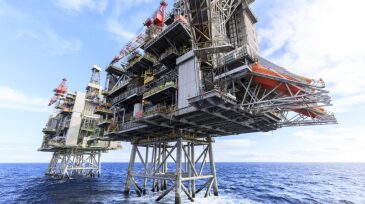Rystad Energy
-
Because offshore project lead times are longer than in shale, production is likely to come on line in 2–5 years when oil prices may be higher. But the number of FPSOs to be sanctioned this year may be cut by half.
-
The most recent hydrocarbon production boom is under way in the Middle East, and this time, the race is spilling into offshore waters.
-
Sharp reductions in operating expenses has rekindled growth and exploration in the UK North Sea, but this fragile recovery will require a continued luck in exploration drilling and a focus on holding the line on costs, which are still high.
-
A total of 12.2 billion BOE was discovered worldwide in 2019—the highest volume in 4 years, with offshore regions dominating the list of new deposits.
-
Global OPEX is falling, and the UK has emerged as a cost-cutting powerhouse among global offshore regions feeling the squeeze of uncertain oil prices. In pursuit of lower unit prices, Rystad Energy says that operators and contractors have begun nurturing operational improvements.
-
Reduced investment in US shale will continue to weigh down the global oilfield services market through 2020.
-
Lower oil prices and capital discipline are expected to result in a double-digit drop in shale and tight oil spending, while deepwater momentum is seen continuing. This comes as “massive investments” will be needed in the next decade to meet growing oil demand.
-
A fresh wave of offshore project sanctions across Southeast Asia could boost greenfield investments in the oilfield service space by almost 70% in 2020. The growth will be driven by a handful of new megaprojects across Malaysia, Myanmar, and Vietnam, according to recent project commitments.
-
Service firms are diversifying their portfolios, in part driven by large-scale budget cuts among operators since the industrywide downturn.
-
Heavy deal-making since 2015 by the two majors has resulted in very different upstream portfolios.










